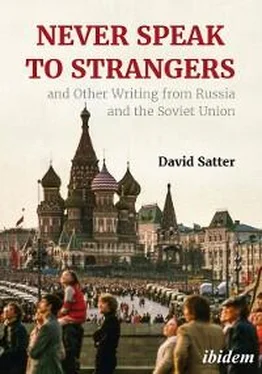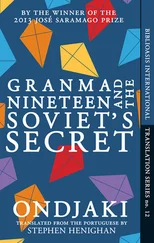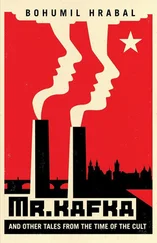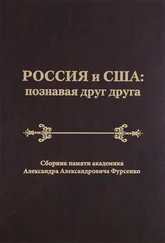1 ...7 8 9 11 12 13 ...37 This is what happened with the formation of the dissident Committee to Monitor Soviet Observance of the Helsinki Accords, which during recent months were the focus of Soviet dissident activity. The Helsinki Group members gathered information on Soviet human rights abuses, interviewed affected individuals and held Press conferences exactly as if they were citizens of a Western democracy. The arrests of Dr. Orlov, February 10, Helsinki Group member Mr. A. Ginzburg, on February 3, Ukrainian Helsinki group leader Mr. Rudenko, and Ukrainian Helsinki group member Olexy Tikhy on February 5 were a means of demonstrating to them that they are not.
Dissidents learn to live with uncertainty. The Soviet Government operates in secrecy and it is hard to judge the mood of the authorities. For many months it appeared possible that the Soviet authorities would tolerate the existence of the unofficial Helsinki monitoring committee because of their justification in the light of the Helsinki agreement and the obvious violation of the spirit of the agreement which arresting the members of the monitoring committees would represent.
Now, however, it is clear that the Soviet authorities will continue to punish organised dissident activity even when it conforms to internationally accepted standards of human rights. Under these circumstances, Soviet dissidents form an important category of the population. They are the only group in the Soviet Union which openly challenges the authorities.
The dissident subculture is populated by people who know each other well and can always be found at each-others’ homes. None can be confident that their actions are unknown to the KGB. Many, like Mr. Ginzburg, are chronically ill, the legacy of unrelenting pressures and years in a camp. Dissidents cannot speak freely on the phone (if their phone has not been disconnected) or in their apartments for fear of bugging. Outsiders must be treated with suspicion because a neighbour or casual friend could be an informer.
They do, however, have two institutions. The Solzhenitsyn fund was set up by exiled author Alexander Solzhenitsyn in 1974 with royalties from his book about Stalinist prison camps, the Gulag Archipelago. Since then, the fund has dispersed 270,000 roubles (£210,000) to about 1,500 political prisoners or their families. The fund was administered until his arrest by Mr. Ginzburg who said its purpose was to assure that “political prisoners today had a chance to survive.” It is undoubtedly a source of irritation to the authorities because it takes the illegitimacy of political arrests for granted and works to mitigate the severity of State punishment.
The Chronicle of Current Events, also operates unofficially and has become an important part of the Soviet scene. Now in its ninth year, the Chronicle appears once every two or three months in typewritten carbon copies. Probably no more than a few hundred copies of each issue are produced, but the Chronicle circulates widely by hand and contains the most recent dissident information, including searches and arrests. The Chronicle’s accuracy and impartiality have led many to suggest that it is the best newspaper in the Soviet Union.
The dissidents inevitably become outcasts despite this pressure however, their way of life has a certain attraction which the Soviet authorities have at various times indirectly acknowledged. The Communist Party newspaper Pravda , in its attack on the dissidents on February 12, said that there are still people in the Soviet Union, who are attracted by talk of greater freedom in the West, and thus it was necessary to be politically vigilant as “never before.”
There are at least several hundred people in Moscow who, although not active dissidents, are willing to risk signing petitions in support of arrested dissidents. At least 1,000 have made personal contributions to the Solzhenitsyn Fund. A petition circulated on behalf of Mr. Ginzburg was signed by more than 200 persons. There was a time when signing a petition meant almost automatic dismissal. Now it may merely limit a person’s progress in a career without costing him his job.
Those who do sign petitions must always live with the uncertainty of a possible call from the KGB, informing their employers. But the KGB is now believed to be hesitant to see people fired for signing petitions lest they form an ever-growing and embarrassing pool of dissidents.
Beyond those who support the dissidents, moreover, there is a far larger number of persons who sympathise. Just who and how many is impossible to say. I estimate that as many as a fourth of the people in the major cities may listen to foreign radio broadcasts and are aware of the reaction to dissident arrests in the West. But many take it for granted that they have less freedom in the Soviet Union, and while they may sympathise, regard the dissidents’ efforts as useless.
However, the dissident movement in the Soviet Union, continues to maintain itself. As older dissidents are imprisoned or emigrate, new ones appear. “Many people want to live decently,” said Dr. Turchin, “But most have no courage to do so. For some people, however, the desire to live decently is stronger than the fear of possible consequences. The dissidents exist as a subculture within the dominant culture. They think otherwise, act otherwise, do otherwise and so defy totalitarianism. You will always find some persons to represent the subculture.”
The Financial Times, Tuesday, April 5, 1977
Nationalism in Lithuania
Something odd went on one night last month in Vilnius, capital of Soviet Lithuania. Along Lenin Prospekt, the main avenue, clusters of militiamen were in. evidence at regular intervals, and in the darkened side streets police were stopping passers-by and asking for identification.
There were two explanations for what was taking place. The police said they were investigating the fatal shooting of a militiaman during the robbery of an office of the state insurance company. Lithuanian nationalists said that Vilnius is always ringed with police on February 16, because it is the anniversary of Lithuania gaining independence after the First World War.
Mr. Kestutis Jokubynas, an archivist who spent 17 years in Soviet prison camps for nationalist activities, was picked up that evening in front of one of the main hotels in Vilnius. He spent his years in the camps learning foreign languages and has applied to emigrate to Canada. When the police asked him about the shooting, he told them. “I’m not going to play a part in your comedy.”
Whatever the reason for the display of force that night, there is no doubt that nationalism continues to be a factor in Lithuanian life even today, 37 years after the country was incorporated into the Soviet Union to be transformed from a somewhat backward, independent nation with a largely agrarian economy into a highly industrial and primarily urban Soviet republic.
The incorporation into the Soviet Union in 1940 was accompanied by mass deportations. Lithuania was subsequently occupied by the Nazis during the Second World War and then, for eight years after the war, new deportations took place together with forced collectivisation and bitter partisan warfare against Soviet rule.
Once the partisans were suppressed and the futility of further resistance was generally accepted, Lithuania embarked on a period of remarkable economic growth under a programme of rapid industrialisation. During 1940–69, taking the period as a whole, Lithuania actually led all Soviet republics with the growth rate of its gross industrial product. Soviet figures show that Lithuanian industrial output has risen 49 times over since 1940, whereas industrial output in the Soviet Union as a whole between 1940 and 1972 increased by 13.6 times.
Читать дальше












